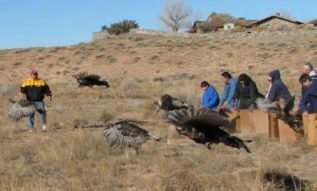
The Pueblo of Santa Ana's Department of Natural Resources (SADNR) mission is to develop and implement natural resource management programs which protect, preserve, and enhance the natural living environment for current tribal members and future generations. Many of their conservation efforts on the 79,000-acre trust are paying off as detailed in a recent case study published by TomKat Ranch.
SADNR is part of the New Mexico Coalition to Enhance Working Lands (NM CEWL), a network of groups and individuals whose purpose is to support and enhance ongoing efforts to improve the health and productivity of New Mexico working lands that support agriculture and the environment. Our focus is to increase soil health, biodiversity, and hydrologic function wherever possible. HMI is also a part of this coalition and we are working on curating the many stories of good land management practices in New Mexico.

The SADNR has used planned adaptive livestock grazing and riparian and forest restoration to support wildlife, healthy soil and vegetation communities, and resilient agriculture despite only receiving 8.5 inches of rain. The results have been that they have increased grass cover by 108%! The improved wildlife habitat supports not only the pronghorn, turkey, Rocky Mountain elk, mountain lion, mule deer, black bear, and bird species like Southwestern willow flycatchers and yellow-billed cuckoos, but also the approximately 900 tribal residents and three livestock grazing groups.

The SADNR has worked closely with the Natural Resources Conservation Service (NRCS), Bureau of Indian Affairs (BIA), United States Fish and Wildlife Service (USFWS), United States Environmental Protection Agency (US EPA), and other groups, investing more than $10 million since 1996 in improving wildlife habitat and land health. One of the key investments was through the NRCS to help divide the 29,000 acres of rangeland into 14 paddocks to allow for adequate recovery for the grass plants and to keep cattle out of critical riparian areas and wildlife habitat. While there are over 140 vegetation monitoring transects to determine the outcome of this improved management, there have also been economic results as noted by Ty Menchego of the Simms Grazing Group on the Pueblo who reports that since the implementation of their planned grazing program, forage production has improved and cattle performance has increased dramatically. In the past, the cows that went to auction weighed an average of 700 – 800 pounds. They now average 1,200 – 1,300 pounds for a 42% increase. He has also seen conception rates climb steadily from less than 50% to more than 70% today for a 40% increase. All these increases mean improved profitability for the tribal ranchers. Click here to read the full case study.
